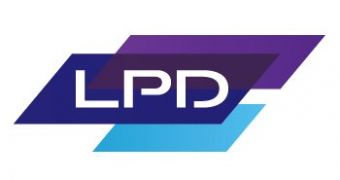Although it has so far flown unde the radar, Prysm has come out with a new type of display technology that seems to promise more than LCDs can currently offer. The company has proudly trumpeted the LPD, a new kind of display that boasts a free form and a much reduced power consumption compared with that of other display solutions. LPD images are created by using a laser engine to excite a phosphor screen.
"Prysm's technology addresses the key segment of large-area displays with the promise of low power operation and scalability," Paul Semenza, senior vice-president at DisplaySearch, the leading display market research firm, said. "This type of technology could open up new markets in consumer and professional applications."
LPD stands for Laser Phosphor Display and is a new category of large-format displays with a power consumption 75% lower than that of other technologies. The LPDs are also made up of non-toxic materials and are manufactured through a low-impact process, which also implies the lowest cost of ownership and carbon footprint of any large format display.
"We have spent the last 4 years developing a truly disruptive technology with a team of the best technologists in the industry" Amit Jain, CEO of Prysm, Inc., added. "LPD is generating excitement from prospective customers around the world. Although we knew that image quality would appeal to customers everywhere, we have also found that the LPD energy efficiency to be very important in every geographic market. Prysm provides regulators a proof point that one can make energy efficient displays without compromising quality or cost."
Eco-friendliness, however, is far from being the only advantage of this new technology. LPDs also feature a high brightness, contrast and natural color content with zero motion blur. Not only that, but the displays are even able to take any shape, size and resolution. In addition, the LPDs are designed with a self-calibrating architecture and long-life semiconductor lasers. This not only delivers a uniform image quality, but also enables a long product lifespan.
Unfortunately, the vagueness of the press release is all that has been offered. There is no clear indication of the actual costs and eventual product prices. Information may be found on http://prysm.com/.

 14 DAY TRIAL //
14 DAY TRIAL //